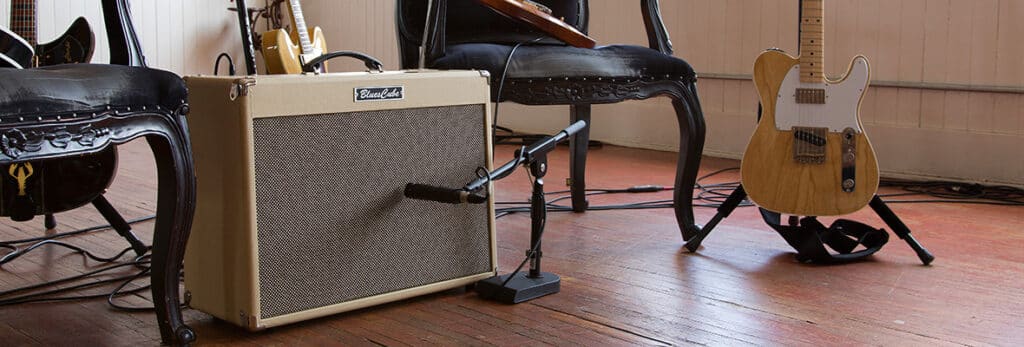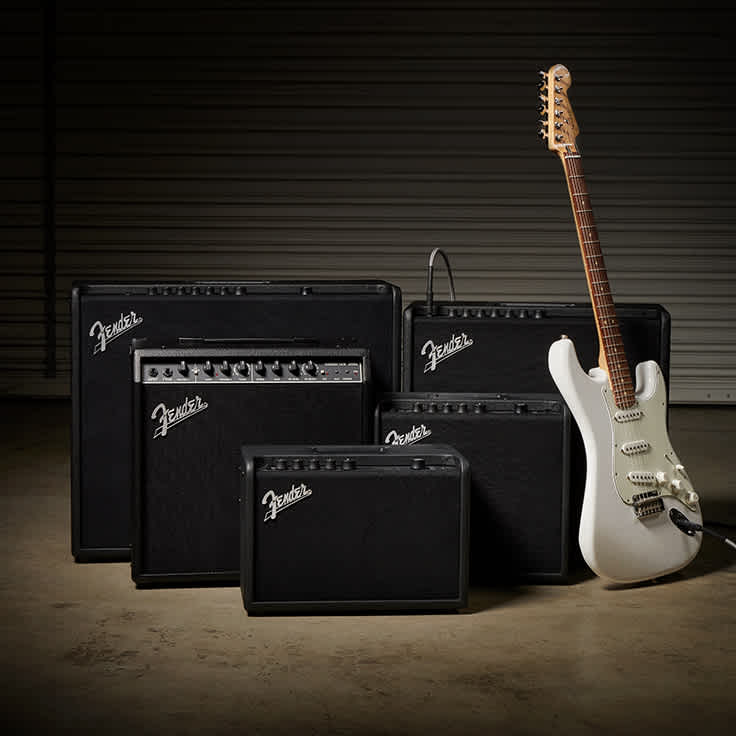Last Updated on November 1, 2022 by IDS Team
To get the most out of your amp, it’s good to understand it as a whole. Knowing how to think about music and about your sound is the most important part of working fluidly with your gear. While many musicians want better gear, here are a few hacks, fresh perspectives, and tips which will help you think about your amp differently – meaning you can make do with whatever you have and still have it sound amazing.
Get the Most From Your Amp: Know Your Tone
Every amp is unique. In fact, even with two different models, the condition in which the amp is kept plus other factors such as its age will affect the sound. Therefore, working out what the average tone of your amp is can be a lifesaver. Is it a rich valve amp? Does it tend to be heavy on the top end? If you get your knowledge of these parts worked out, knowing what to change when you dislike a sound becomes really easy.
Things to try: List five things you don’t like about your tone. Then, spend an afternoon or so playing around with your amp to see how and when these quirks vanish. It might be that you hit on the perfect combinations of settings to get rid of that annoying top end which has always bothered you.
Phase 2: Know the Rest of Your Gear
You might just be jamming, but things get complicated when you start adding pedals. Get to know all your gear inside and out. This isn’t just about being good with your gear. It’s about really knowing the ins and outs of everything plus how it connects. That way, you can separate what piece of kit is affecting which aspects of your sound. Ultimately, it also takes into account parts of your guitar such as the pickup switch and tone knobs. These can really affect the sound coming out of your amp. There’s actually a lot the guitarist needs to take into account to influence the ultimate sound. Being able to separate each piece of kit is key in order to craft the sound you want.
Things to try: Think of every aspect of your gear, from your pickups to any pedals you have. Then, try improvising a guitar solo while varying each aspect and notice how the sound changes. This can help you tune your ear to all the nuances.
Understand Your Options – And How they Effect Each Other
This gets more into the nitty gritty of your amp itself. Most amps have a couple of tone knobs and a dial for distortion. Some brands such as Marshall geared more towards certain genres of music. Realise that distortion on one amp will sound very different to distortion on another. This might sound obvious, but this is one mistake beginners tend to make before they have found their sound. This fallacy is to treat every amp like an average fender or orange amp. Some amps also have delay and reverb. These can come in handy depending on the room you’re in. A room with a lot of soft furnishings won’t have the natural echoes you might desire when recording.

No option on an amp works in isolation. Cranking up both the distortion and the reverb at the same time can be overwhelming. However, another common first-time habit is to simply keep adding more effects when your sound doesn’t satisfy you. Instead, learning how all dials on your amp affect each other means you can achieve the desired sound with precision.
Things to try: In the same way your DAW allows you to save presets, once you find the perfect combination of settings on your amp, take a photo for future reference. You might be surprised how much of a lifesaver knowing your sweet spot on your amp can be in the stress before a gig!
Get the Most From Your Amp in the Studio: Know How to Record
It goes without saying that recording as opposed to playing live or just jamming takes some specialist know-how. However, the settings you need will be very different to those you want live. As a result, the options you use will change if you’re going from a recording session to a live gig. Keeping track of this means eventually you will spot patterns. Therefore, transitioning from one to the other will be very easy. It also gives you the subconscious know-how to create news settings for certain sounds and places.
Things to try: The studio can be daunting. Research some of the gear you’re using beforehand. Does it favour rich, analogue amps? Taking this into account, mess around with your amp to see how you could adapt your typical settings to the quirks of recording.
When Things Seem Tough: Work With What You’ve Got
You may dream of having a huge Marshall stack, but with your setup, it’s probably not realistic. However, it can be very satisfying to work with what you’ve got in terms of recreating sounds. You may not sound like Dave Grohl, but if you really get to know your amp, you can fake it. Copy your favourite artists, listen to their interviews, and learn what settings they use. Then, find the closest approximation on your own amp. This will also help show you the difference between your gear and other people’s. And with this kind of experimentation in context, you will develop a broad, holistic overview of how sound works. In the end, this is much more useful than a narrow set of skills for your studio only.
Things to try: Try restricting yourself. After all, tone is in the fingers. If you only allowed yourself to use the gain knob without touching the rest of your amp, what creative possibilities might you be forced to unlock?
Final Thoughts
Whilst these aren’t hard and fast rules, these hacks can help you understand how to work with your gear as opposed to simply getting it to work for you. It sometimes can sound a bit unusual, but the best musicians treat their music like a parallel world where they can really get into creative flow. Understanding how every aspect affects the overall result is the first step to getting that world to really fit together. As a result, these tips are the first step to thinking differently about your playing.
Like tutorials? You can find more here.



